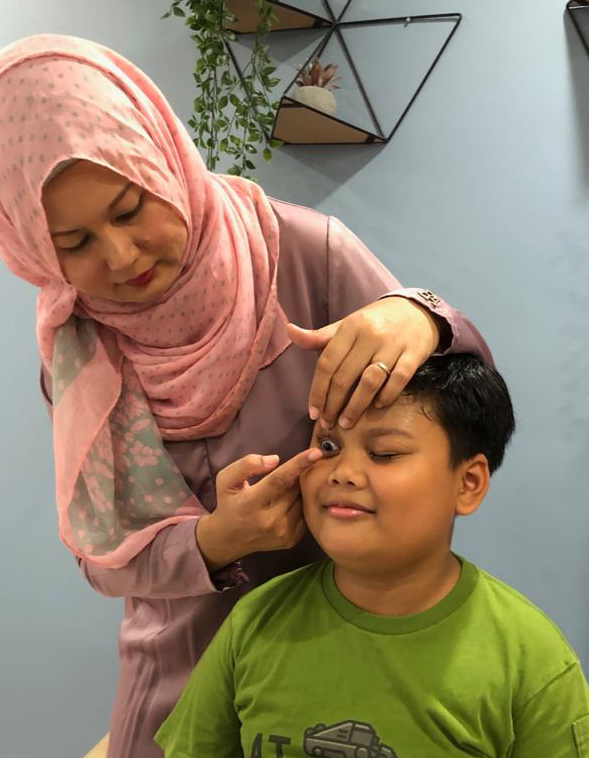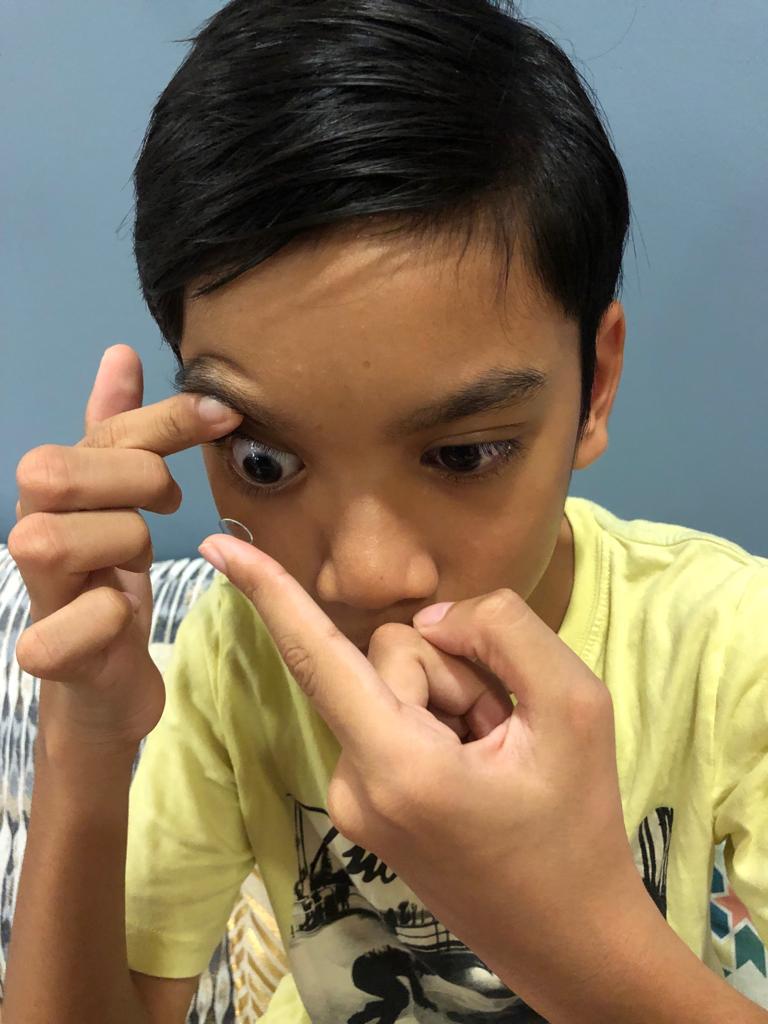What is Orthokeratology?
Orthokeratology (ortho-k) involves the use of rigid, gas-permeable contact lenses worn overnight to shape the cornea in order to correct mild to moderate refractive errors. Patients do not need to wear the lenses during the day, but the effect is temporary and they need to be worn regularly at night to maintain clear daytime vision.
Schedule a fitting appointment today!

Who might benefit from orthokeratology?
Ortho-k has emerged as an appealing option for many kids with myopia, especially those who are involved in sports or other activities that make wearing glasses difficult. Parents can insert the contact lenses for their child before he/she sleeps, remove them in the morning and the child will have near perfect vision nearly the whole day provided that the myopia is less than -6DS. In addition, some studies have shown that ortho-k may help slow the progression of myopia and parents have turned to this to control their children’s myopia.
Why are we worried about myopia?
There has been a dramatic increase in the prevalence of myopia worldwide, especially in the East Asian population where figures of 90% have been reported in university populations. Aside from its socioeconomic burden, myopia, even when relatively low, is associated with significantly increased risks of potentially blinding diseases such as myopic maculopathy, retinal detachment, cataracts and glaucoma. Rather than simply treating the consequences, the focus is now on limiting the progression of myopia, which typically peaks between the ages of 8 to 12 years in Singapore.

Does orthokeratology slow down myopia progression?
One of the first studies suggesting that ortho-k might slow down myopia progression was published in 2011, when researchers from Japan evaluated the effect of ortho-k lenses on eyeball elongation in children, a factor associated with myopia progression. They found that overnight orthokeratology suppressed elongation of the eyes of children.
Since then, more studies have been published and most of them found that ortho-k has significantly greater efficacy in controlling axial elongation in children compared to spectacle correction. In addition, there appears to be a greater myopia control effect in Chinese children compared to Caucasians, and in those with higher initial myopia.
What are risks of orthokeratology?
Because Orthokeratology involves overnight lens wear, it increases the risk of hypoxia (reduced oxygen) which can lead to the swelling of the corneal. In unfortunate circumstances, the wearer may also develop eye infections such as Infectious keratitis (corneal infections) that can lead to perforation of the cornea, and even if treated successfully can leave a scar.
Such factors, may eventually affect overall vision.
Conclusions
A well-fitted lens, adequate lens care compliance, and regular visits to the Ophthalmologist/ Optometrist can help significantly reduce these potential risks and maintain the overall treatment efficacy of Orthokeratology.
It is therefore important that the parent of the child conducts careful consideration and informed decision-making before embarking on this route of myopia control.

